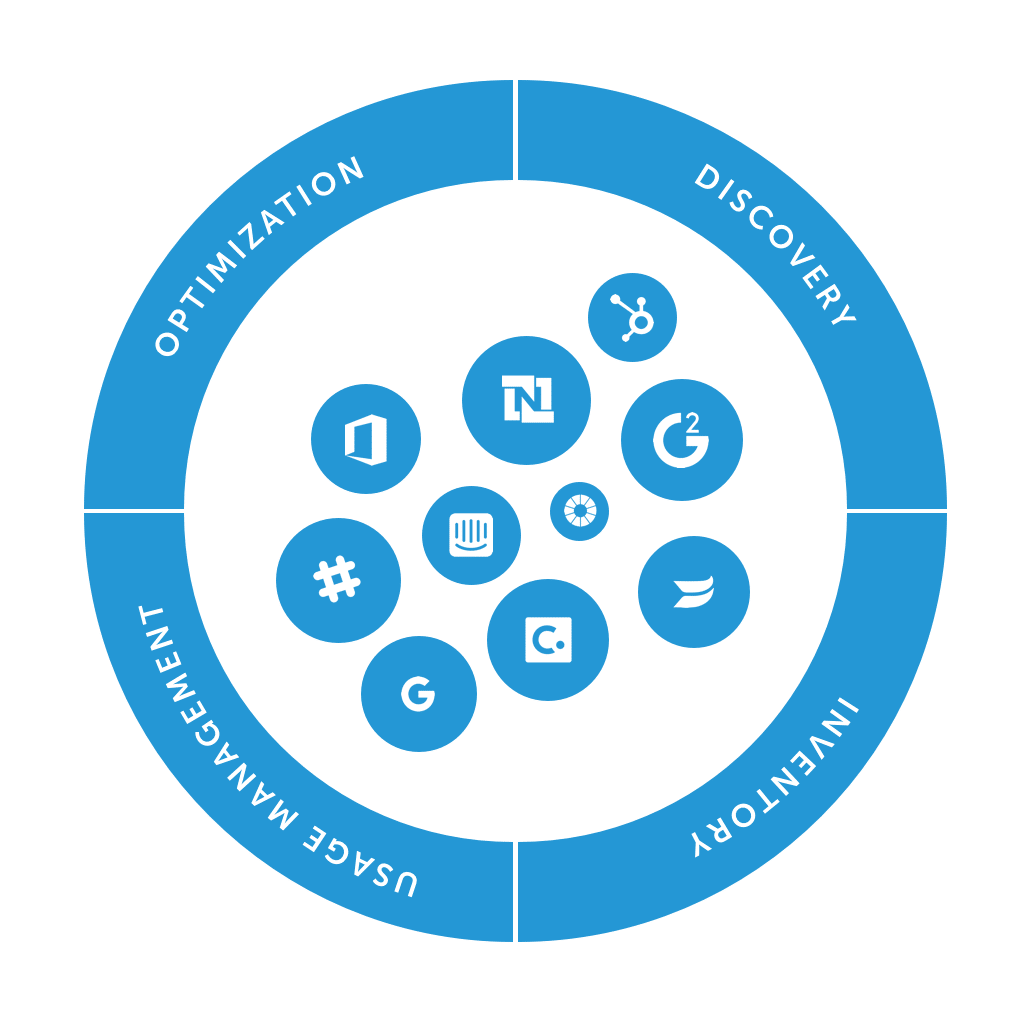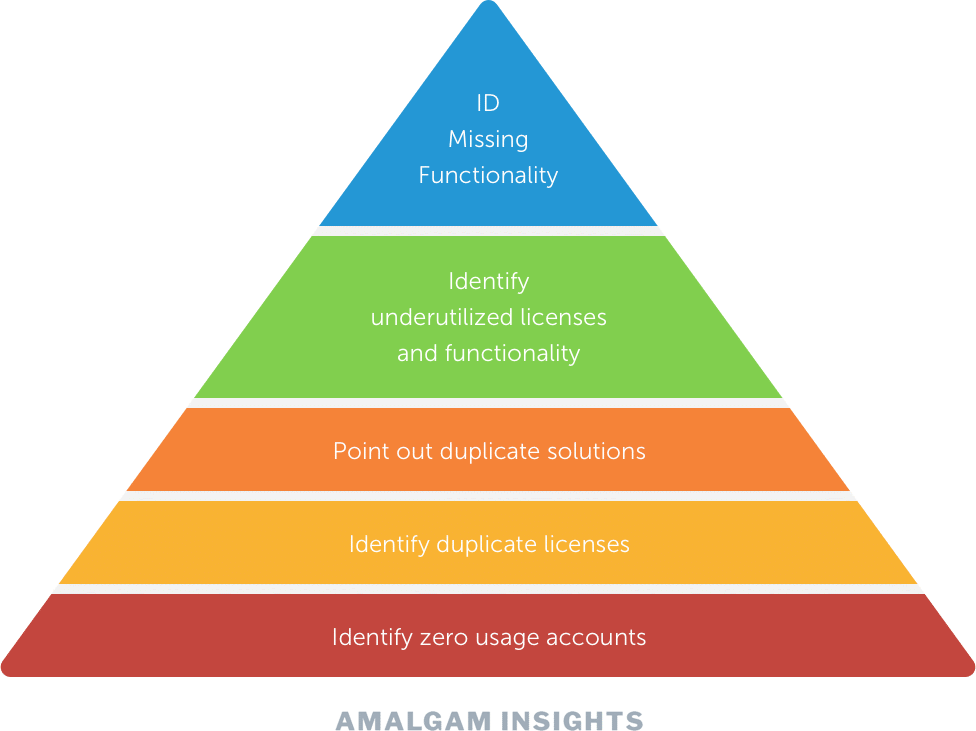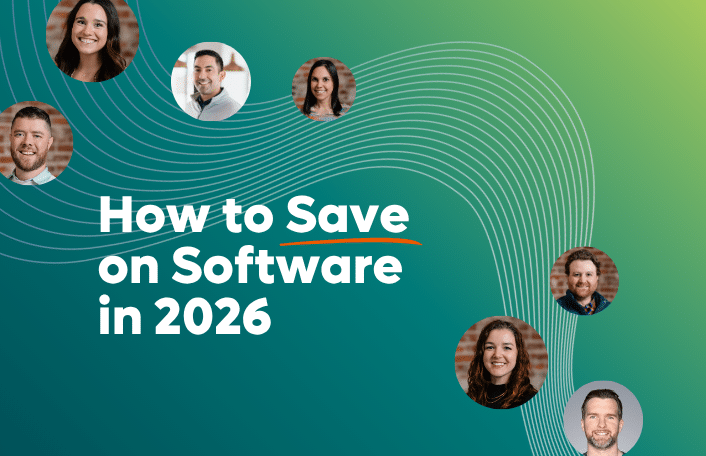
Zylo Wrapped 2025: SaaS Spend, AI Impact, and What’s Next
Table of Contents ToggleKey Themes That Shaped SaaS Management in 20251....
Back
Back
Search for Keywords...
Blog

06/20/2018
Table of Contents
IT, procurement, accounting, and operations managers tasked with managing IT and operational costs will always have their scourges, such as real estate, mobility, and other complex spend categories. Amalgam Insights warns that SaaS (Software-as-a-Service) now takes its place in the pantheon of troublesome spend categories that require specialized sourcing, expense management, and support strategies. To understand why, consider the nature of SaaS as a spend category and operational responsibility.
Enterprise SaaS is growing 25-30% per year as a global market, meaning that a basic Rule of 72 shows that this category is currently doubling every three years. As an end-user enabler that can be purchased at price points as low as a few dollars per month (or even free in some cases), the sourcing management of SaaS is even more challenging than that of enterprise mobility, since SaaS can be bought by anyone and assigned to any employee, partner, or even customer based on the buyer’s preferences. The potential challenge of managing hundreds, or even thousands of subscriptions and accounts at an enterprise level does not fit well with traditional sourcing and expense models where a specific category will be managed by a preferred vendor or two.
So, how can companies gain control of this amorphous and unruly spend category? Amalgam Insights recommends a four-part model of Discovery, Inventory, Usage Management, and Optimization to start centralizing and rationalizing the enterprise SaaS environment.

SaaS Discovery can be challenging, since SaaS can be purchased by any individual. These costs can be easily expensed or hidden in operational expenses while the actual function might be accessed on a corporate computer, mobile device, or a personal computer or device.
A holistic discovery process would including tracking device and network activity, single sign-on, expense reports, accounts payable solutions, internet browser activity, and custom integrations with all SaaS applications with accessible APIs.
Needless to say, this combination of finance, procurement, network activity, APIs, browser plug-ins, and cloud access service management is extremely challenging.
From a practical perspective, Amalgam recommends starting with a combination of managing expense reports and accounts payable reports for SaaS expenses from a financial perspective and then using unified endpoint management (UEM) and Cloud Access Service Brokers (CASB) to identify technical activity.
Over time, Amalgam believes that all of these discovery capabilities have value, but that it is not typically practical to fully enable all of these SaaS discovery capabilities due to the combination of effort, governance, and investment needed to conduct holistic discovery. Realistically, following the money will provide the most effective general starting point for discovery.
Inventory from a SaaS perspective means identifying the vendors, accounts, the features or account categorization that define functionality, and then the users, projects, or departments owning each SaaS account. This means both building the inventory from each SaaS provider and then accessing lists of relevant users, departments, projects, partners, and customers.
It may require accessing HR information systems, Active Directory, customer and partner records, and/or enterprise project portfolio management systems. For a SaaS inventory to work, every SaaS cost must be defined and assigned to some function of the business.
Usage Management in a SaaS perspective refers to each end user’s access and utilization of their accounts.
At a high level, businesses must know if users are actually logging in on a monthly basis to identify whether accounts are alive or whether there are zombie app accounts with no usage that are being paid month after month. However, SaaS also requires a more nuanced view, especially for vendors with multiple products or with multiple tiers of usage.
If possible, companies should also track the functions that are being used on a monthly basis and get a better understanding of why key apps are used. This aspect of SaaS Management provides IT with a chance to be strategic by aligning SaaS usage to practical business activities that make money, retain customers, or get product out the door.
Optimization is where the expense management gains occur. Once companies gain true visibility into their SaaS environments, it becomes much easier to climb the pyramid of SaaS optimization maturity.

Removing zero usage and duplicate licenses should be low-hanging fruit for companies that have gone through this initial expense management path. Identifying duplicate solutions that can potentially be duplicated requires companies to first have an appropriate categorization of SaaS to know if there are five CRM solutions or five project management solutions being used throughout the company.
The next tier of underutilized functionality can be trickier to identify, as there is no generalized way to detect feature-specific usage across all accounts. However, start with vendors that provide some level of feature-specific usage detail or track logins across different applications or functions within a single vendor. Over time, Amalgam hopes that SaaS solutions start to improve their usage and log detail provided to customers so that it becomes easier to figure out how to right-size accounts in a more nuanced fashion.
The top tier is about identifying missing functionality in an organization and finding opportunities to use technology more efficiently. The position of seeing all SaaS activity in an enterprise is potentially powerful in that it allows that SaaS manager to see what applications or functions may be used by high-performing or anomalous employees to a greater or lesser extent. Although this viewpoint may be seen as a traffic cop or compliance role, it may also be an opportunity to suggest that certain employees should be provided access to additional tools that are serving as force multipliers for increased revenue, improved service, or greater productivity. SaaS is the toolkit of digital transformation; strategic enterprises will use SaaS expense management not only to cut costs, but to increase the use of high value applications.
By taking this four-fold path of Discovery, Inventory, Usage Management, and Optimization in the context of SaaS Expense Management, enterprise managers can both control this complex spend category and provide strategic guidance for a digitally enhanced enterprise. Amalgam Insights recommends that any enterprise with over $25,000 in monthly SaaS spend across 20 or more SaaS vendors consider this optimization path, as it is likely to provide two key value propositions: 1) savings that will potentially pay for a Full Time Equivalent over the course of a year and 2) visibility to make improved enterprise SaaS decisions.

Table of Contents ToggleKey Themes That Shaped SaaS Management in 20251....

Table of Contents Toggle1. Discovery2. Inventory3. Usage Management4. OptimizationZero Usage Accounts...

Table of Contents Toggle1. Discovery2. Inventory3. Usage Management4. OptimizationZero Usage Accounts...

Table of Contents Toggle1. Discovery2. Inventory3. Usage Management4. OptimizationZero Usage Accounts...
| Cookie | Duration | Description |
|---|---|---|
| cookielawinfo-checkbox-analytics | 11 months | This cookie is set by GDPR Cookie Consent plugin. The cookie is used to store the user consent for the cookies in the category "Analytics". |
| cookielawinfo-checkbox-functional | 11 months | The cookie is set by GDPR cookie consent to record the user consent for the cookies in the category "Functional". |
| cookielawinfo-checkbox-necessary | 11 months | This cookie is set by GDPR Cookie Consent plugin. The cookies is used to store the user consent for the cookies in the category "Necessary". |
| cookielawinfo-checkbox-others | 11 months | This cookie is set by GDPR Cookie Consent plugin. The cookie is used to store the user consent for the cookies in the category "Other. |
| cookielawinfo-checkbox-performance | 11 months | This cookie is set by GDPR Cookie Consent plugin. The cookie is used to store the user consent for the cookies in the category "Performance". |
| viewed_cookie_policy | 11 months | The cookie is set by the GDPR Cookie Consent plugin and is used to store whether or not user has consented to the use of cookies. It does not store any personal data. |
